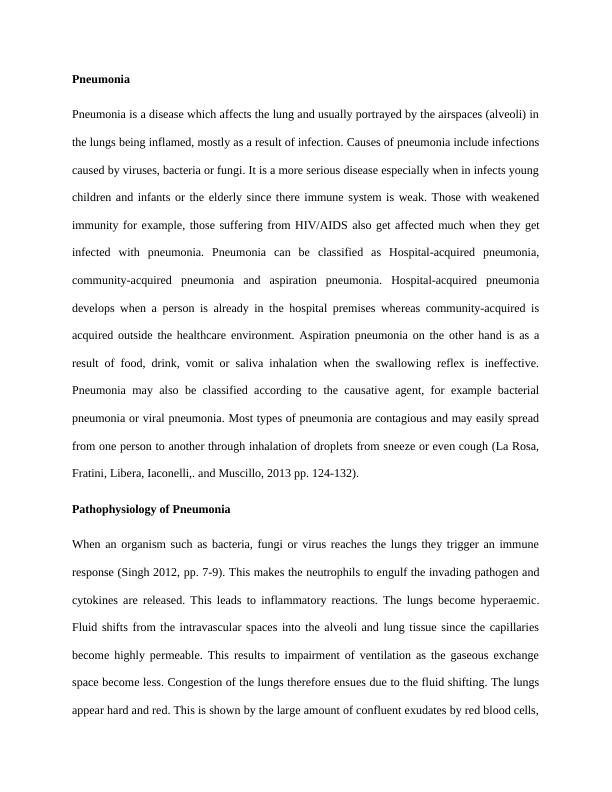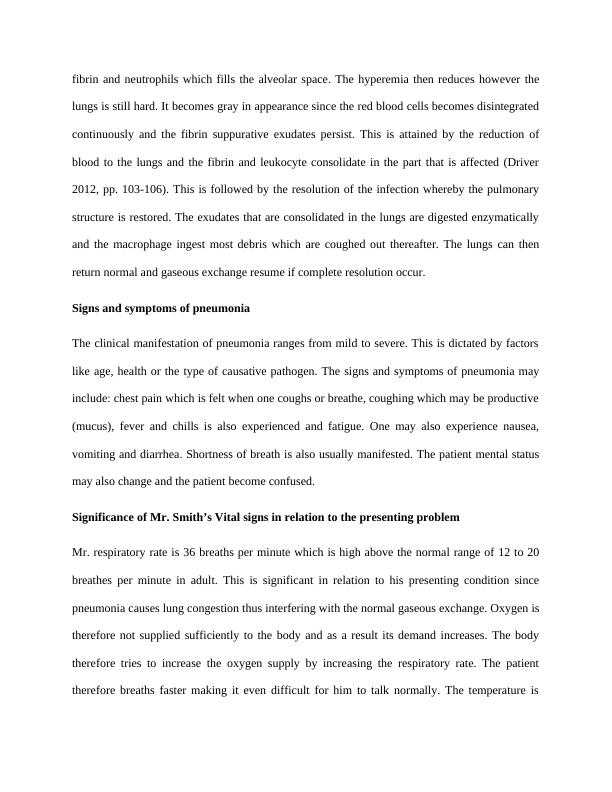Pneumonia: Causes, Pathophysiology, Symptoms, and Treatment Options
Complete your response/s to all nine (9) questions about the case study below in the pre-prepared answer file and follow the instructions provided by your Trainer/Assessor.
8 Pages1716 Words315 Views
Added on 2023-06-04
About This Document
This article discusses the causes, pathophysiology, symptoms, and treatment options for pneumonia. It also explains the significance of vital signs and patient history in relation to the presenting problem and provides a care plan for effective airway clearance and improved gaseous exchange.
Pneumonia: Causes, Pathophysiology, Symptoms, and Treatment Options
Complete your response/s to all nine (9) questions about the case study below in the pre-prepared answer file and follow the instructions provided by your Trainer/Assessor.
Added on 2023-06-04
ShareRelated Documents
End of preview
Want to access all the pages? Upload your documents or become a member.
Nursing Case Study - Clinical manifestation of pneumonia among older patient
|11
|3699
|64
Shortness of Breath | Case Study
|2
|659
|15
Anatomy and Physiology of Bilateral Lower Lobe Pneumonia
|4
|778
|300
Prevention of Pneumonia in the Elderly
|7
|1878
|83
Amoxicillin for Pneumonia
|8
|1661
|260
Pneumonia and Pediatric Care Report 2022
|12
|3026
|11



